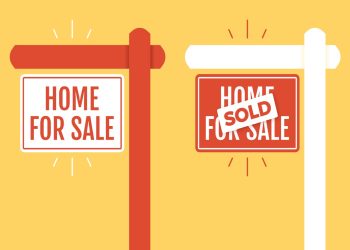RISMEDIA, April 4, 2011—(MCT)— What started as a hobby for Keith Gamble is now a risky, exciting, full-time job: buying properties at the monthly foreclosure sale and flipping them. Gamble, and others like him, are a new generation of property flippers who buy at low prices at a foreclosure auction, clean up a property and sell it for a profit.
“Some people’s bad fortune is other people’s opportunity,” Gamble says. “I know that sounds callous—I know people doing what I’m doing at the courthouse each month are there to take advantage of that opportunity, but I also feel we provide a backstop to the market.”
Today’s flippers differ from those during the real estate boom who took advantage of rapidly increasing prices and were fueled by loose lending regulations, says Tom Maeser, a real estate analyst with the Coastal Carolinas Association of REALTORS®. When the market collapsed, many of those flippers were stuck with properties they couldn’t afford, he notes.
“That really irritated a lot of people and caused problems,” Maeser continues. The flippers during the market peak would often buy a property before construction, wait for it to be built, hold onto it for a few months and then sell it for a profit. Today the flippers are buying at low prices, doing some minor repairs and then trying to sell the properties quickly. The profits aren’t as large but the flippers may be selling more properties in a year, says Penny Boling, the broker-in-charge of Century 21 Boling and Associates in Myrtle Beach.
Flipping properties isn’t something new, she comments; it’s just taken different forms over the years, and it hasn’t always had that name. Boling says she sees some differences between today’s flippers and those during the boom, including their knowledge of the market.
“They are really doing their homework on what prices are,” she said. “Before, the market was going so fast no one was looking.” Many of the foreclosure flippers will attest to the hours of work they put in; several said they spend upwards of 60 hours leading up to the auction doing research and trying to see properties they might want to buy. Unlike a typical property purchase where a buyer can see the property and get a home inspection, often a buyer of a foreclosure at auction has little access to a property and sometimes must bid without seeing the inside of it.
“There’s just a lot of research involved in it,” says Johnny Buxani, a Realtor® who also flips foreclosure properties. He will look through a list of properties for sale, identify the ones he is interested in and then try to drive by them to see them. Once he narrows down the list, he looks at the market value and establishes how much he would be willing to pay and how much he thinks he could make on each property.
It’s important to know about the real estate market to know about any problems with developments or buildings and to be up to date with how prices are changing, Buxani said.
Armed with those papers and a budget, he heads to the monthly foreclosure sale and tries to be the winning bidder. “It’s really gambling,” Buxani says. “It’s a rush.”
There is often competition among bidders on the best properties, but most have a set cutoff price. The winning bidder has to pay a 5 percent down payment within 24 hours and the remainder of the price within 30 days. Unlike flippers during the boom, these buyers aren’t piling up loans that they can’t pay back. Instead they’re paying cash either from their own money or with the backing of investors.
Most of the time, the flippers won’t make any major repairs but typically might repaint, replace appliances and improve landscaping. Some properties need more work, such as new countertops, flooring or new heating and air conditioning systems.
Gamble explains most flippers have a set number of properties they want to have at one time and know how many they’re willing to bid on each month. For him, he’s willing to have about four properties at a time and will wait until one sells before bidding on another.
Gamble says he’s careful not to overextend himself and knows that even if he gets stuck holding some of the properties, he would be able to cover the expenses.
That caution is warranted because it’s rarely a smooth path from the purchase to the sale. It is a risky business and most foreclosure flippers have at least one story of a property that didn’t work out as they had expected. For Buxani, that was an oceanfront condo with a serious mold problem that required thousands of dollars to fix. One of Gamble’s deals fell through when he turned down one offer on two of his properties, only to see the other potential buyer back out at the last minute. For David Galfetti, another REALTOR® and real estate investor, it was a problem with a mortgage that held up a deal for several months.
“I’ve gotten stuck a few times,” says Galfetti, who represents a group of investors and typically buys two or three properties each month, depending on how quickly the ones he bought previously are selling.
Like the others, he tries to get a property on the market as quickly as possible and tries to sell it within the first couple months. “The main thing is people are sometimes amazed at how we get them resold,” Galfetti says. The trick, he explains, is to know before he buys how much he can get for a property.
Unlike Gamble and Buxani, who have been flipping foreclosures for less than a year, David Galfetti is not a newcomer to the foreclosure sales. He has been buying at the foreclosure auctions for about six years, though he’s bought more in recent years. When he started going to the foreclosure auctions, there were far fewer properties for sale and a much smaller crowd, Galfetti says.
The flippers are helping fix up foreclosure properties that are often left in bad shape and hard to sell, which is good for the market, Maeser says. “Anyone who depletes the foreclosure inventory is helping the marketplace because we will not see appreciation or increases in values until foreclosures go away,” he notes. Galfetti and the others say that they know the volume of foreclosures and current opportunities won’t last forever, but that they are an important part of the market. “It’s unfortunately the whole state of the union but we’re doing a favor to the lowest end of the market, which has to get cleaned up before the regular stuff can sell,” Galfetti says.
Boling agrees that their ability to pay cash and get rid of foreclosures is helping the overall real estate market. “They’re kind of like the street sweepers,” she comments. “They’re part of the cleanup committee of this marketplace.”
Maeser says that it’s unclear what impact the foreclosure flippers will have on prices. Flippers could help improve property values in a neighborhood if they price properties fairly, but if they are selling properties below the lowest price in the neighborhood it could have a negative impact. The properties flippers sell are typically priced at market value, though they try to be among the best priced in an area, Galfetti says.
“I don’t feel we are contributing to lower prices,” Gamble notes. “I feel more we are getting inventory out of the banks’ hands.” If banks were lending more, there would be less of a market for flipping foreclosures, he says. “In a couple years, these opportunities will dry up, banks will be lending more and inventory is getting depleted,” Gamble continues. “This niche market might disappear or get very limited.”
Boling says that sales activity is starting to pick up, and she expects foreclosures to decrease as the market improves.
Galfetti and Buxani say they’d change their focus once the opportunities to flip foreclosures dwindle. “I obviously hope it does dry up and the whole market and whole economy turns around, (but) I don’t see it happening anytime soon,” remarks Galfetti.
(c) 2011, The Sun News (Myrtle Beach, S.C.).
For more information visit www.thesunnews.com.










